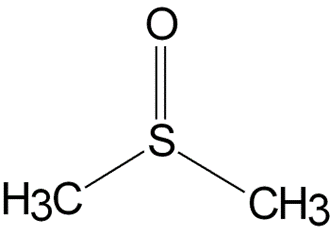Professional Manufacturer of Biomagnetic Beads

What Are the Top 5 Trends in Molecular Biology Industry in 2025?
Foreword
The molecular biology industry is riding a wave of technological disruption and industrial upgrading. A Spanish research team has, for the first time, leveraged generative AI to design novel synthetic proteins, significantly enhancing the efficiency and safety of gene editing.
Meanwhile, a team from the Chinese Academy of Sciences has made a major breakthrough in understanding the origins of the CRISPR system, and BGI’s in-house developed massively parallel DNA synthesis technology (mMPS) has achieved systemic breakthroughs in throughput, yield, and quality.
1 Upgrades in Gene Editing: Parallel Advances in AI-Designed Proteins and Mechanistic Insights
The field of gene editing is currently defined by two major trends: the use of artificial intelligence to design novel synthetic proteins, and a deeper exploration into the mechanisms of gene editing systems.
Through a collaboration between Spain’s Integra Therapeutics and Pompeu Fabra University, generative AI has been used to design new synthetic proteins capable of editing the human genome more effectively than their natural counterparts, opening new avenues for enhancing biotech research and personalized medicine tools.
A collaborative effort between Gao Caixia’s team at the Institute of Genetics and Developmental Biology of the Chinese Academy of Sciences and Liu Junjie’s team at Tsinghua University, after seven years of research, led to the discovery of TranC, an evolutionary intermediate that bridges transposons and CRISPR.
Published in Cell, this research reveals that the core mechanism driving the evolution of the TnpB transposase into the Cas12 system stemmed from a “functional splitting” of the guide RNA.
Concurrently, research from teams led by Xu Ruiming and Jin Wenxing at the Institute of Biophysics of the Chinese Academy of Sciences, published in Science, elucidated the DNA-targeting transposition mechanism of the human LINE-1 retrotransposon, providing crucial insights into genomic dynamics and evolution.
2 Breakthrough in DNA Synthesis: From “Feasible” to “Precise, High-Quality, and Cost-Effective”
The field of synthetic biology has achieved a critical technological breakthrough. The DNA synthesis technology (mMPS) unveiled by BGI Research represents a fundamental shift from traditional methods.
This innovative technology utilizes a chip divided into independent millimeter-scale micro-reaction units. Each unit synthesizes a single short DNA strand and is equipped with a unique barcode, allowing for precise identification and sorting of the DNA fragments.
This advancement elevates synthetic biology from merely “feasible” to a new standard of being “precise, high-quality, and cost-effective,” marking a systemic breakthrough in synthesis throughput, yield, and quality.
The cost per base synthesis is reduced by approximately 70% compared to conventional methods, paving the way for large-scale industrial applications.
In clinical diagnostics, this technology enables the one-step synthesis of thousands of primer-probe pairs, reducing synthesis costs by more than threefold and offering more robust solutions for early cancer screening, infectious disease monitoring, and genetic disorder diagnosis.
3 Innovation in Multi-Omics Technologies: Simultaneous Live-Cell Multi-Omics Analysis Tackles Key Challenges
The field of multi-omics research has witnessed significant progress with the advent of technologies for simultaneous multi-omics analysis in live cells. Researchers including Fan Xinyuan, Liu Jun, and Chen Peng at Peking University have successfully developed CAT-seq, a photocatalytic labeling technique for live-cell transcriptomics, and CAT-ortho, a method enabling concurrent multi-omics photocatalytic labeling.
These two novel technologies require no genetic transfection and are straightforward to implement, allowing for spatiotemporally controlled labeling of diverse biomacromolecules within the same sample.
They are compatible not only with standard cell lines but also directly with primary cells and clinical samples, providing vital chemical tools for transcriptomic and multi-omics studies at subcellular resolution.
Using CAT-ortho, researchers deciphered the mitochondrial multi-omics dynamics during the activation of mouse primary CD8⁺ T cells. They observed significant upregulation in transcript abundance and regulatory proteins, and, by correlating this with changes in oxidative phosphorylation levels, uncovered the pivotal role of mitochondrial transcriptional regulation in T cell activation.
4 In Planta Directed Evolution System Fills a Critical Technology Gap
In October 2025, a collaborative study between Qiu Jinlong’s team at the Institute of Microbiology and Gao Caixia’s team at the Institute of Genetics and Developmental Biology, both of the Chinese Academy of Sciences, was published in Science. The report announced the first successful development of GRAPE, a rapid and versatile in planta directed evolution system.
This work overcame the technical hurdle of plant gene functionality being dependent on plant-specific modifications by employing engineered geminivirus replicons.
Utilizing the GRAPE platform, the team conducted directed evolution on NRC3, a key helper NLR protein in the Solanaceae family. They obtained a range of NRC3 variants that maintained immune activity while gaining resistance to suppression by nematode effector proteins.
This strategy generates valuable genetic resources for breeding disease-resistant crops and presents an effective solution to the genetic resource bottleneck in crop breeding programs.
5 Innovation in Nucleic Acid Extraction: A Breakthrough from Shanghai Lingjun Biotechnology

In gene sequencing, sample processing technology is a critical factor influencing overall industry efficiency. Shanghai Lingjun Biotechnology Co., Ltd., capitalizing on its innovations in magnetic bead-based nucleic acid extraction, has launched a Universal RNA Extraction Kit (Magnetic Bead Method).
This technology achieves “universal extraction with a single kit,” capable of handling challenging plant samples (e.g., xylem, polysaccharide/polyphenol-rich samples, traditional Chinese herbs) as well as animal samples (e.g., tissues, blood), thereby breaking the categorization constraints of traditional kits and boosting experimental efficiency by 200%.
The company has also developed Swab-based and Serum/Plasma Viral Nucleic Acid Extraction Kits (both Magnetic Bead Method), designed to isolate and purify high-quality genomic DNA/RNA from various sample types.
When used with fully automated nucleic acid extraction systems, these kits can complete the extraction process in just 9 minutes, dramatically increasing testing throughput.
Shanghai Lingjun’s Universal RNA Extraction Kit incorporates four core technologies, including a lysis buffer system that requires only simple grinding and centrifugation, ensuring a consistently high RIN (RNA Integrity Number) value above 7.0 in the extracted product, fully meeting the demands of high-precision downstream applications like third-generation sequencing.
Leveraging 13 years of expertise in magnetic bead technology, the company employs self-developed nano-scale magnetic beads with optimized surface functional group modifications to achieve a nucleic acid recovery rate exceeding 95%.
Supplier
Shanghai Lingjun Biotechnology Co., Ltd. was established in 2016 which is a professional manufacturer of biomagnetic materials and nucleic acid extraction reagents.
We have rich experience in nucleic acid extraction and purification, protein purification, cell separation, chemiluminescence, and other technical fields.
Our products are widely used in many fields, such as medical testing, genetic testing, university research, genetic breeding, and so on. We not only provide products but also can undertake OEM, ODM, and other needs. If you have a related need, please feel free to contact us .






